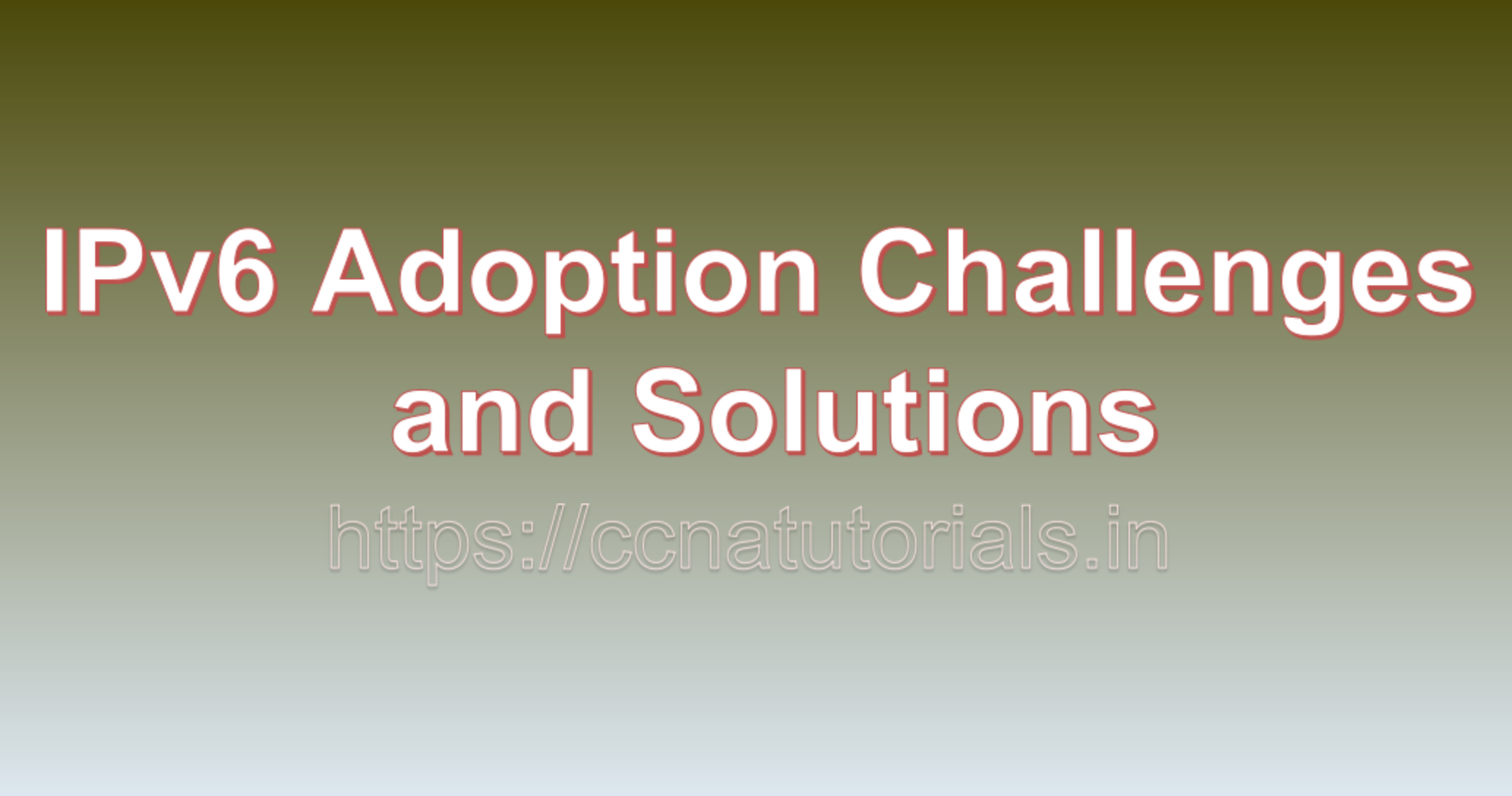Contents of this article
In this article, I describe IPv6 and Autonomous Systems: Navigating the Next Generation of Networking. The landscape of networking is evolving at an unprecedented pace, driven by the proliferation of connected devices, the expansion of the Internet of Things (IoT), and the demand for high-speed and reliable communication. As the world transitions from Internet Protocol version 4 (IPv4) to Internet Protocol version 6 (IPv6), it brings forth new opportunities and challenges for network architectures, including Autonomous System (AS). This article explores the convergence of IPv6 and Autonomous System, shedding light on their significance, implications, and the ways they shape the future of networking.
1. IPv6’s Role in Autonomous Systems:
– Address Space Scalability:
IPv6’s extensive address space alleviates the limitations of IPv4, providing enough unique IP addresses to accommodate the increasing number of devices within Autonomous Systems.
– Efficient Routing:
IPv6’s streamlined header structure enhances routing efficiency, contributing to reduced latency and optimized network performance within Autonomous Systems.
– Quality of Service (QoS):
IPv6’s header improvements enable better implementation of Quality of Service mechanisms that prioritize specific types of traffic, ensuring a consistent user experience.
2. Autonomous Systems and Their Significance:
– Definition:
An Autonomous System is a collection of IP networks and routers under the control of a single organization that presents a common routing policy to the internet.
– Types of Autonomous Systems:
ASes can be categorized as transit ASes, which provide connectivity to other ASes, and stub ASes, which have a single connection to a transit AS.
– Border Gateway Protocol (BGP):
ASes communicate with each other using BGP, a protocol that determines the best path for routing traffic between ASes.
3. Benefits of IPv6 and Autonomous Systems Integration:
– Scalability and Address Space:
IPv6 addresses the address scarcity issue faced by IPv4, ensuring that Autonomous System have a sufficient pool of unique IP addresses for their devices and services.
– Simplified Network Management:
IPv6’s autoconfiguration capabilities simplify the process of assigning IP addresses, reducing the administrative overhead associated with manual configuration.
– Enhanced Network Performance:
IPv6’s efficient header structure leads to improved routing and reduced packet processing overhead, enhancing the overall performance of Autonomous Systems.
4. IPv6 and Autonomous Systems Implementation Strategies:
– Dual-Stack Deployment:
– Solution: Organizations can deploy dual-stack networks that support both IPv4 and IPv6 simultaneously within their Autonomous System.
– Outcome: This approach enables a gradual transition, allowing devices and services to communicate using either protocol, ensuring connectivity with both IPv4 and IPv6-enabled resources.
– IPv6-Only Deployment:
– Solution: Organizations can opt for IPv6-only deployment within their Autonomous Systems, leveraging the benefits of IPv6’s efficient routing and streamlined header structure.
– Outcome: IPv6-only deployment simplifies network management and eliminates the complexities of maintaining dual-stack configurations, enhancing network performance.
5. IPv6 and Autonomous Systems Challenges and Considerations:
– BGP Transition:
Migrating BGP configurations from IPv4 to IPv6 requires careful planning and coordination to ensure seamless connectivity between Autonomous System.
– Interoperability:
Ensuring compatibility between IPv4 and IPv6 devices within Autonomous System is crucial for maintaining network functionality during the transition.
– Security:
IPv6’s features, such as autoconfiguration and expanded address space, require organizations to implement proper security measures to prevent potential vulnerabilities.
6. IPv6 and Autonomous Systems Integration in Practice:
– Large Enterprise Network:
– Scenario: A large enterprise with an extensive network architecture is preparing to transition to IPv6 within its Autonomous System.
– Solution: The organization adopts dual-stack deployment, allowing devices within the Autonomous System to use both IPv4 and IPv6 addresses.
Outcome:
– The enterprise ensures connectivity for existing IPv4 devices while progressively enabling IPv6 capabilities.
– IPv6’s benefits, such as address space and efficient routing, enhance the performance of the Autonomous System.
– Internet Service Provider (ISP):
– Scenario: An ISP with a vast network of subscribers aims to provide enhanced connectivity through IPv6 within its Autonomous System.
– Solution: The ISP adopts IPv6-only deployment, leveraging the efficient routing and simplified network management benefits of IPv6.
Outcome:
– Subscribers experience improved network performance and reduced latency due to IPv6’s streamlined routing mechanisms.
– The ISP positions itself as a provider of next-generation connectivity, attracting customers who prioritize modern networking solutions.

In short IPv6 and Autonomous Systems Navigating the Future of Networking with IPv6 and Autonomous Systems:
The integration of IPv6 within Autonomous Systems represents a crucial step toward embracing the future of networking. IPv6’s benefits, including address scalability, efficient routing, and streamlined network management, are well-aligned with the goals of Autonomous Systems. By implementing IPv6 through strategies like dual-stack or IPv6-only deployments, organizations can position their Autonomous Systems for growth, efficiency, and enhanced performance. The collaboration between IPv6 and Autonomous Systems exemplifies the dynamic evolution of networking, enabling seamless communication and connectivity in a world driven by emerging technologies and increasing demand.
IPv6 and Autonomous Systems: Enabling Next-Generation Networking
Autonomous Systems (AS) are a fundamental concept in the architecture of the internet, referring to interconnected networks operated by a single organization under a common routing policy. As the internet evolves and expands, the limitations of the current addressing scheme, Internet Protocol version 4 (IPv4), have become apparent. Internet Protocol version 6 (IPv6) offers a solution to address these limitations and align with the evolving landscape of Autonomous Systems. This article delves into the integration of IPv6 within Autonomous Systems, highlighting its significance, benefits, and implementation considerations.
1. IPv6’s Role in Autonomous Systems:
– Address Space Expansion:
IPv6’s vast address space is pivotal for accommodating the growing number of networks, devices, and services within an Autonomous System.
– Route Aggregation:
IPv6’s hierarchical addressing structure facilitates efficient route aggregation, leading to a more scalable and manageable routing infrastructure.
– Address Autoconfiguration:
IPv6’s autoconfiguration capabilities simplify the assignment of unique IP addresses to devices within an Autonomous System, reducing administrative overhead.
2. Benefits of IPv6 Adoption in Autonomous Systems:
– Scalability:
IPv6’s extensive address space enables Autonomous Systems to accommodate an ever-increasing number of devices and networks, ensuring continued growth.
– Efficient Routing:
IPv6’s optimized header structure enhances routing efficiency, leading to improved network performance and reduced latency for data-intensive applications.
– Simplified Network Management:
IPv6’s autoconfiguration features simplify the process of IP address assignment and reduce the need for manual intervention in network management.
3. IPv6 Implementation in Autonomous Systems:
– Dual-Stack Deployment:
– Solution: Organizations operating Autonomous Systems can implement dual-stack networks that support both IPv4 and IPv6 simultaneously.
– Outcome: This approach ensures seamless connectivity for devices that use either IPv4 or IPv6 addresses, allowing for a gradual transition.
– IPv6-Only Deployment:
– Solution: Organizations with new infrastructure or greenfield deployments can opt for IPv6-only networks to leverage its advantages.
– Outcome: An IPv6-only deployment simplifies network management and aligns with the future trajectory of networking technologies.
4. IPv6 Deployment Strategies in Autonomous Systems:
– Enterprise Network Upgrade:
– Scenario: An enterprise operating multiple branch offices across the world experiences connectivity challenges due to the exhaustion of IPv4 addresses.
– Solution: The enterprise adopts IPv6 through dual-stack deployment, allowing each branch office to communicate using IPv4 or IPv6 addresses.
Outcome:
– The enterprise ensures uninterrupted communication and data exchange between its global offices, regardless of the addressing protocol used.
– IPv6’s extensive address space supports the enterprise’s expansion plans, accommodating new devices and services.
– Data Center Modernization:
– Scenario: A data center provider faces constraints in accommodating the growing number of servers and virtual machines due to IPv4 address limitations.
– Solution: The provider implements IPv6-only deployment within its data centers, leveraging IPv6’s scalability and efficient routing.
Outcome:
– The data center provider optimizes resource allocation by efficiently assigning IPv6 addresses to servers and virtual machines.
– The provider’s data centers can accommodate a higher density of resources, supporting the demand for cloud services and virtualization.
5. IPv6 Challenges and Considerations in Autonomous Systems:
– Legacy System Compatibility:
Ensuring that legacy devices and systems within an Autonomous System are IPv6-compatible can be challenging.
– Transition Mechanisms:
Implementing transition mechanisms, such as 6to4 or NAT64/DNS64, to facilitate communication between IPv6 and IPv4 devices is crucial during the transition phase.
– Network Planning:
Comprehensive network planning and testing are essential to ensure a smooth transition, as any disruptions can impact the functionality of an Autonomous System.
6. IPv6 Success Stories in Autonomous Systems:
– Telecommunication Provider:
– Scenario: A telecommunication provider operating multiple Autonomous Systems across different regions aims to future-proof its network infrastructure.
Outcome:
– The provider embraces IPv6 through dual-stack deployment, enabling seamless communication between devices using both IPv4 and IPv6 addresses.
– The transition enhances network efficiency and paves the way for the provider to offer next-generation services, such as IoT connectivity.
– Cloud Service Provider:
– Scenario: A cloud service provider faces challenges in allocating IPv4 addresses to virtual machines in its data centers, hindering scalability.
Outcome:
– The provider adopts IPv6-only deployment within its data centers, efficiently assigning IPv6 addresses to virtual machines.
– The provider’s data centers experience enhanced resource utilization and scalability, enabling the seamless deployment of cloud services.
Conclusion for IPv6 and Autonomous Systems: Transforming Autonomous Systems with IPv6 for a Connected Future:
The integration of IPv6 within Autonomous Systems is crucial for ensuring seamless communication, accommodating the proliferation of devices and networks, and supporting the evolving demands of the digital age. By implementing IPv6 strategies such as dual-stack or IPv6-only deployments, organizations operating Autonomous Systems can overcome IPv4 limitations and position themselves for future growth and innovation. IPv6 empowers Autonomous Systems to thrive in a connected world, catering to the diverse requirements of modern networking while ensuring scalability, efficiency, and improved performance.






